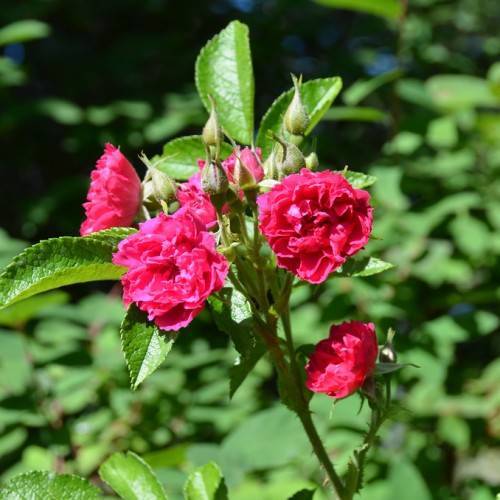
hybrid rugosa rose
Rosa 'Mrs. Anthony Waterer'
Cycle:
Perennial
Watering:
Average
Hardiness Zone:
3 - 8
Flowers:
Flowers
Sun:
Full sun
Fruits:
Fruits Ready In Fall
Edible:
Yes
Leaf:
Yes
Growth Rate:
High
Maintenance:
Moderate
Drought Tolerant:
Yes
Salt Tolerant:
Yes
Thorny:
Yes
Care Level:
Medium
watering
Hybrid rugosa roses (Rosa 'Mrs. Anthony Waterer') do best when given a thorough but infrequent watering. Water early in the morning, focusing on the roots of the rosebush. Soak the soil to a depth of 8-10 inches, letting the soil dry out between each watering. During the hottest part of the summer, water every 7-10 days. In cooler weather, water less frequently. Established roses may only need occasional watering, such as after a prolonged period without rain. Monitor the soil around the roses. If the top 2-3 inches of soil feel dry, it's time to water.
sunlight
Hybrid rugosa roses (Rosa 'Mrs. Anthony Waterer') enjoy full sunlight during the growing season. They need at least 8 hours of direct, bright sunshine each day during the spring and summer months. During the winter, hybrid rugosa roses can be allowed up to 5 hours of direct sunlight and partial shade for the remainder of the day.
pruning
Hybrid rugosa roses should be pruned once a year in late winter or very early spring, just before new growth begins. Start by removing any dead, diseased, or damaged canes. Cut back any stems that are growing too vigorously, as well as canes that are rubbing together or growing away from the center. Reduce the height of any stems that are getting too tall or wide, and shape the bush as desired. Prune back a third of the oldest stems, as they don’t always bloom as strongly as new ones. Avoid pruning stems that are still producing flowers. Finish by removing any suckers or root sprouts.
